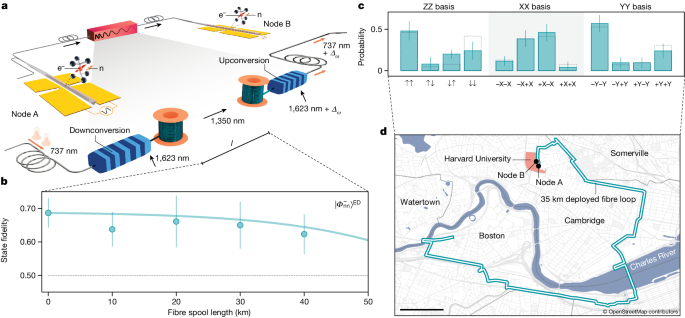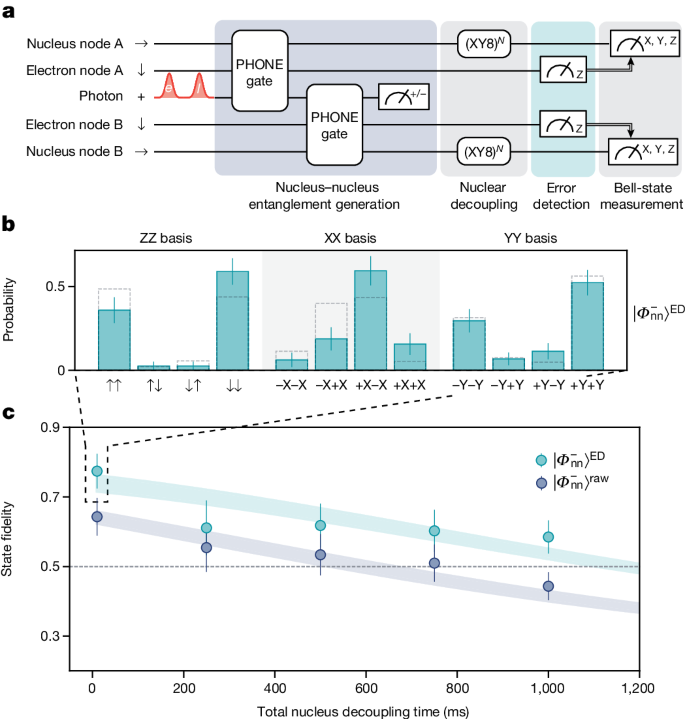/cdn.vox-cdn.com/uploads/chorus_asset/file/23935558/acastro_STK103__01.jpg)
A quantum communications revolution is underway, with researchers and institutions around the world making strides towards building a secure quantum internet. In recent developments, teams from Harvard University and the University of Science and Technology of China have reported successful entanglement of two atomic ensemble memories through telecom fiber networks.
Harvard physicists, led by Can Knaut at Harvard University, set up a quantum network consisting of two nodes separated by a loop of optical fiber spanning 35 kilometers across Boston. The diamonds in Knaut's experiment were able to store the entangled state for up to one second.
Meanwhile, Bao's team at the University of Science and Technology of China was able to match the frequency of the photons meeting at their central node, a crucial step for quantum repeaters connecting different nodes in a quantum network.
These breakthroughs are significant because they bring us closer to realizing a global quantum internet. A quantum internet would use quantum bits, or qubits, which rely on entanglement to transmit information securely over long distances. This could have major implications for fields such as secure communication and distributed computing.
Harvard University and the AWS Center for Quantum Networking (AWS CQN) have also made progress in this area by creating a multi-node quantum network that distributes, stores, and processes quantum information under the streets of Boston. The network uses diamond-based quantum memories to trap light and force it to interact with quantum memories using SiV centers.
These advancements are crucial steps towards building a future secure quantum internet. Quantum networking technologies enable private information sharing and networked quantum computing, serving as the backbone for this emerging field.




:format(webp)/cdn.vox-cdn.com/uploads/chorus_asset/file/23935558/acastro_STK103__01.jpg)



